Growing peppers comes with many potential issues throughout the season. One common problem for growers is sunscald on peppers. Yes, the sun is a vital component of growing peppers outdoors, but it can also be too intense for tender plants and fruits.
In this article, I will show you how to identify sunscald on pepper plants and how to avoid it in the future. There are several growing techniques to help you prevent sunburn on your peppers.
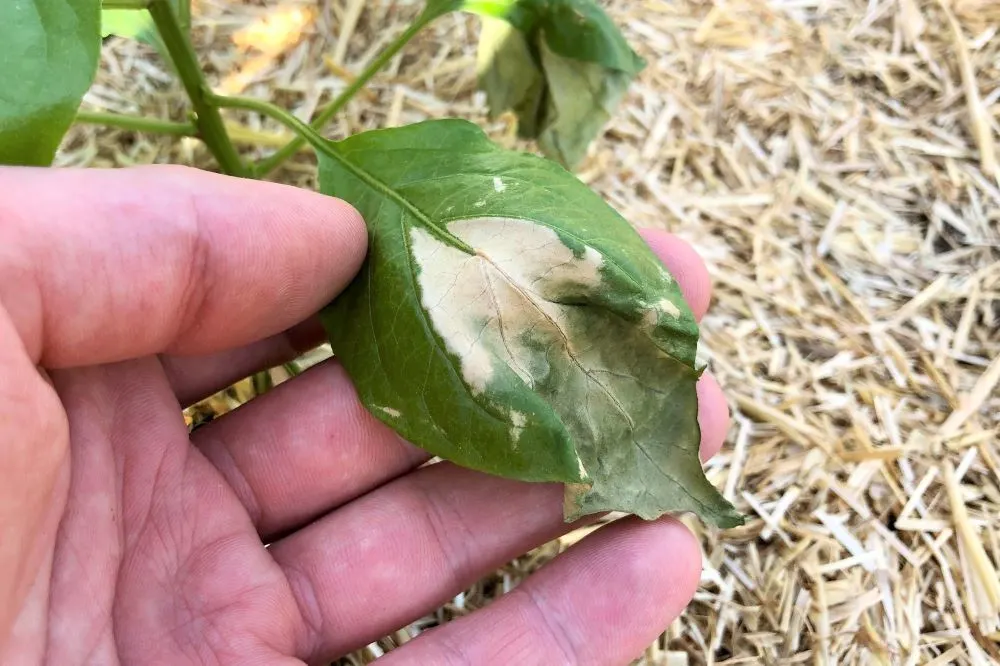
In this article:
What is Sunscald?
Sunscald on plants is defined as damage to plant tissue from excessive sunlight exposure. This may seem strange when you consider that plants need sunlight to produce energy and grow.
Sunscald (or sun scald) on peppers is usually caused by excessive sunlight to tender portions of the plant. These include younger leaves and especially the developing fruits. The less developed skin of young fruits cannot tolerate full-sun conditions on many pepper varieties.
This exposure will essentially cause an injury to your peppers, almost like a sunburn for your plants. It is especially common when plants are transitioned from an indoor to an outdoor growing space with fruits already on the plant.
How to Identify Sunscald on Peppers
Sunscald on peppers can be mistaken for other conditions, but it has a few defining characteristics. Sunburn will often start as a white or black discoloration on the pepper fruit’s skin or on the leaves.
Localized spots on fruits will develop over time and soften. They will sometimes start as dark spots or streaks, eventually turning white. Once the tissue is damaged, it is much more susceptible to diseases and plant pathogens. This often leads to moldy or rotting fruits.
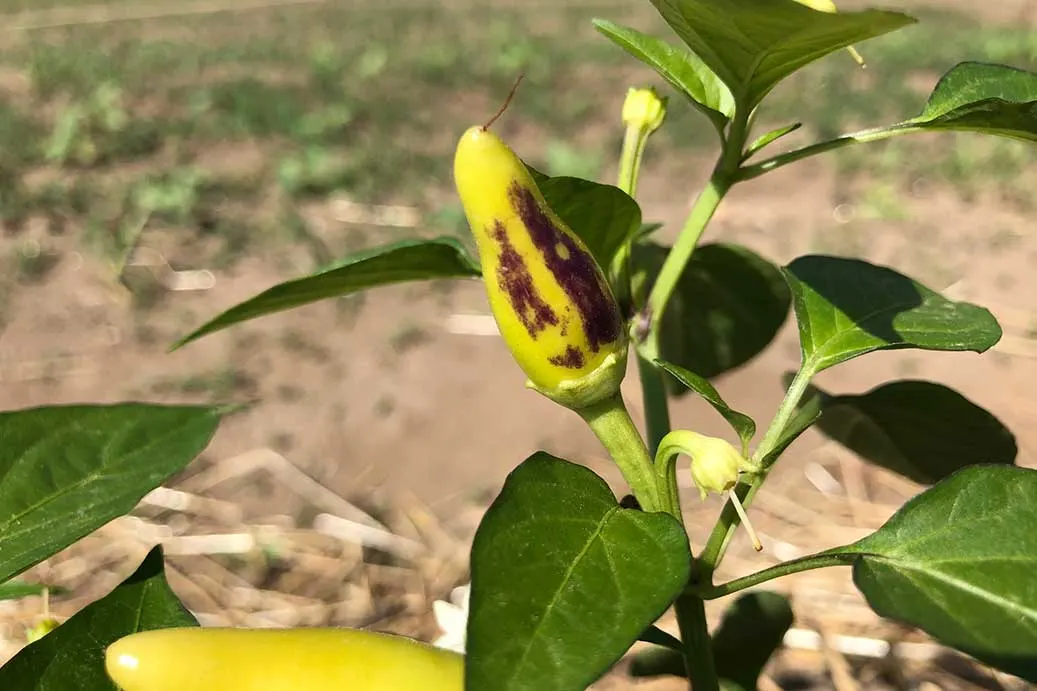
Many pepper varieties hang down naturally are are thus shaded by the foliage of the plant. However, if the peppers grow upwards or are otherwise exposed to prolonged sunlight, then sunscald becomes an issue.
Brown or white foliage
Fruits are not the only part of a pepper plant that is vulnerable to sunscald. Without proper hardening off, tender young pepper plant leaves may become damaged from excessive sunlight.
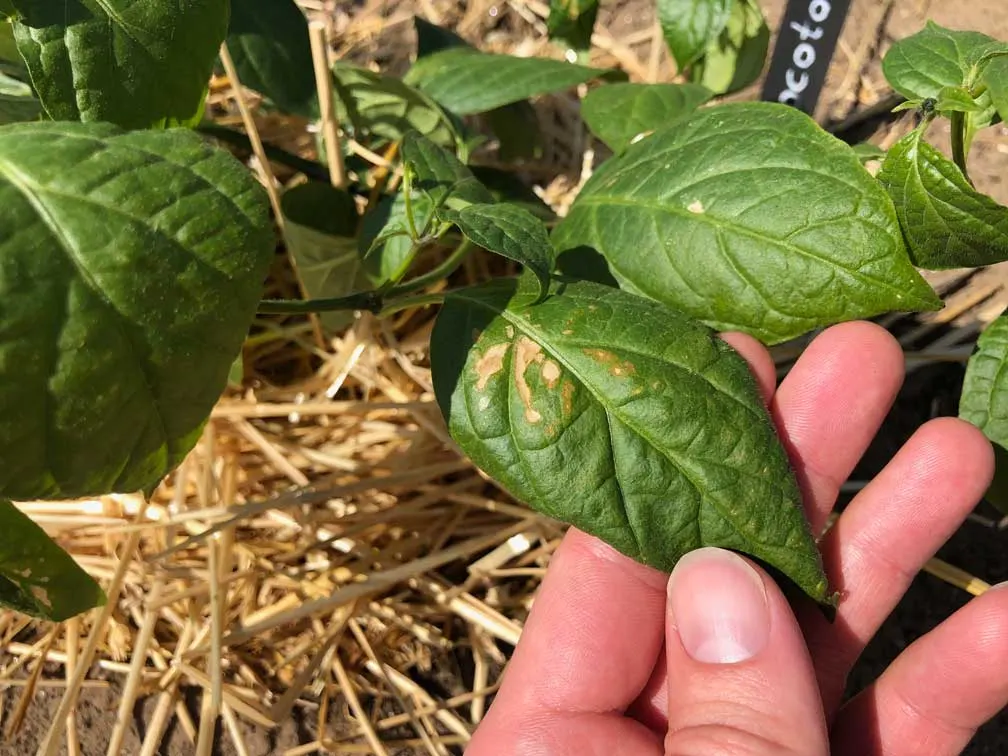
Sunscald on pepper leaves will start with leaves turning brown or ivory-white, quickly becoming dry and crispy to the touch.
Though sunscald on plants may seem counter-intuitive, it is a real concern if you are growing in full sunlight. It is mainly caused by exposed fruits, so lets turn to some solutions to avoid sunscald on peppers.
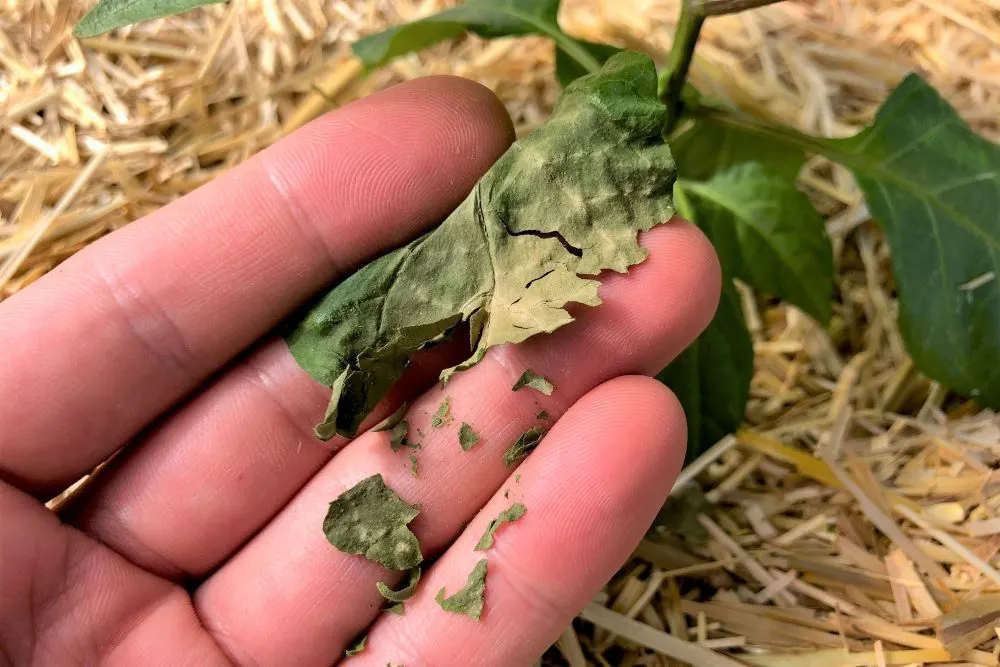
Alternaria Fruit Rot
Alternaria fruit rot is a condition that is mainly caused by injury to your peppers. Lesions form at the site of the injury and eventually sink. They will often then become covered in a brown or black mold. Fruit rot can be caused by sunscald injury, but also by extreme cold, heat, insect damage or a calcium deficiency.
See more on fruit rot here.
If these spots don’t look like your problem, see other causes of spots on pepper leaves here.
How to Prevent Sunscald on Peppers
The best way to fix sunscald is to avoid it altogether. Once it occurs, the affected leaves and fruits are essentially dead. If you plan to sell your peppers, sunscald may cause a loss of some of your crop. Follow these tips to help reduce your risk of sunscald on peppers.
Harden off plants
When starting pepper plants from seed, it is often required to start indoors during the winter. Indoor conditions are very different from outdoor conditions. The sunlight emits different types of radiation from grow lights, and wind and rain will stress the plants as well.
Learn more about hardening off pepper plants here.
Give your plants a proper transition period when moving them outdoors. If you simply put your pepper plants outside in full-sun, they will definitely have issues, starting with wilting leaves, and leading to sunscald.
I usually give our plants at least a couple of weeks to get used to the outdoors. This means gradually increasing the time spent outside each day until they are ‘hardened off.’
Fertilize during early plant growth
One way to avoid sunscald on pepper fruits is to feed regularly during young growth. If your plants don’t get a good start to the season, they may have smaller leaf canopies. This means more light can reach the peppers once they begin growing.
Provide plenty of nitrogen, phosphorus and potassium, as well as calcium and magnesium. Ground soil often contains everything your plants need, but if you grow in pots, supplemental fertilizer is helpful.
Fox Farm makes a great trio of fertilizers, one for each stage of plant growth. Follow a rigorous feeding schedule from day one!
Learn more about fertilizing peppers in our article here.
Grow varieties with shading leaves
Hot, sunny days can be great for pepper plant development. After all, peppers require lots of sunlight to grow at their best! However, these highly sunny days are when peppers are most vulnerable to sunscald.
Some varieties of pepper plants have better leaf coverage than others. When choosing which variety to grow, consider how well the canopy will shade the developing fruits.
For example, bell peppers have large leaves, offering plenty of shade to the peppers. However, some ornamental pepper varieties have much smaller leaves.
Other varieties have peppers that grow vertically, breaching the leaf canopy. This leaves room for the sun to penetrate and scald the fruits. If you’re planting one of these varieties, consider planting in a spot with partial shade.
Provide alternate shade
When you are planning your garden, it is important to consider where each plant should go. Peppers are relatively short and require lots of sunlight. Usually, you’ll want to keep them out in the sun as long as possible.
However, while your plants are still young and transitioning to the outdoors, providing some shade during the mid-day sun can help. I have had success using floating row cover shade cloth to create a makeshift hoop house for this purpose.
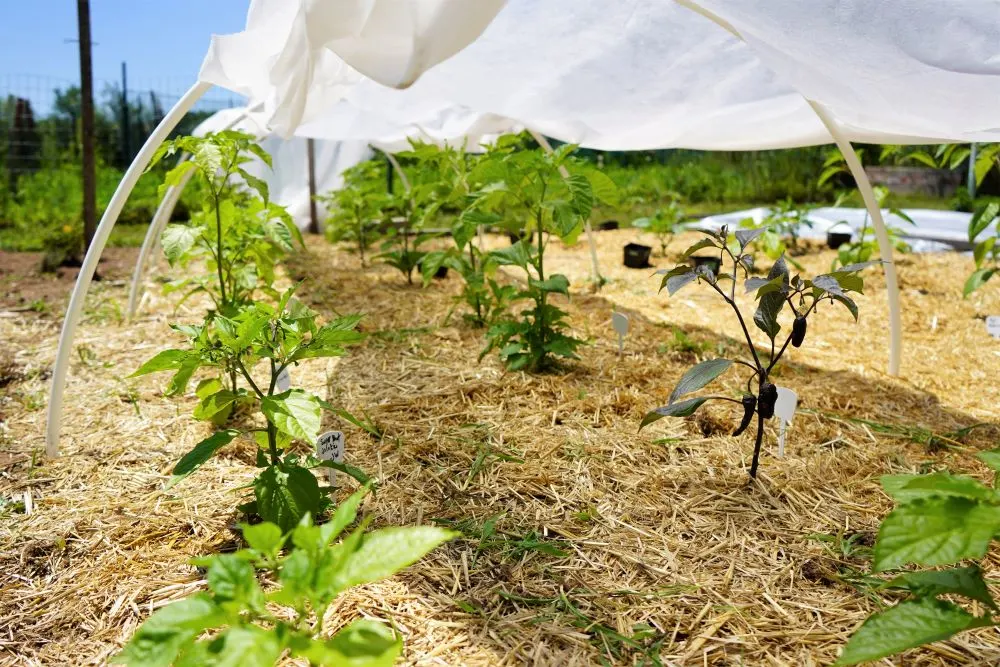
If you don’t want to use artificial shade, consider planting taller plants on the western side of your peppers. Tomatoes, sunflower, or various perennial plants can be used to cast partial shade during the more intense parts of the day.
Sunscald on your peppers can be very disheartening to see. If you suspect that your plants may be at risk, take precautions early and save the peppers! As always, you learn a bit more each year you grow, so next year can be more successful.
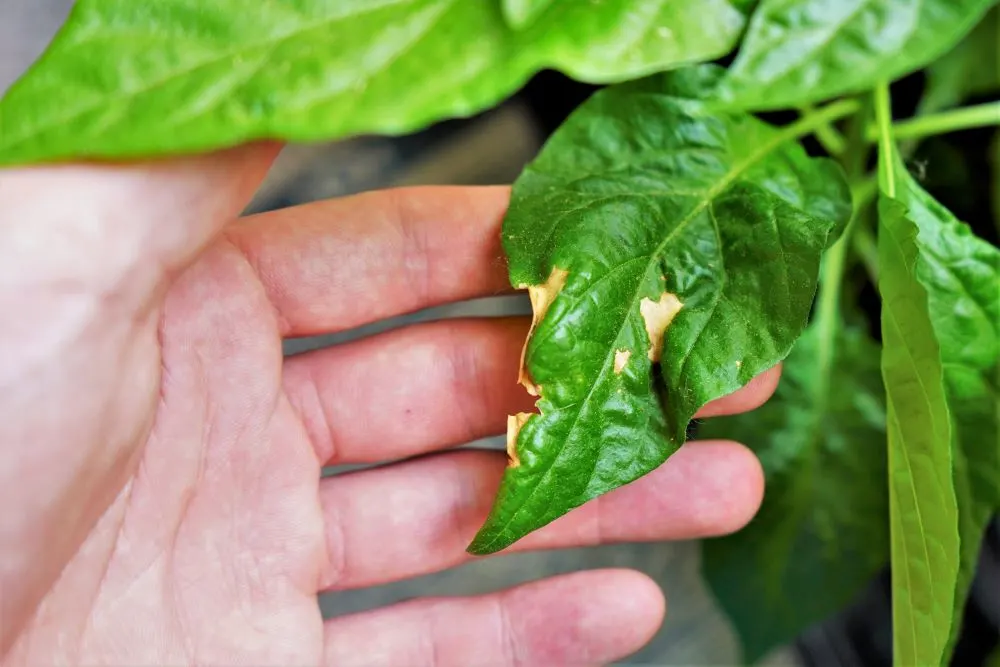
Good luck, and if you have any questions, feel free to leave them below.


Tom Bailey
Thursday 25th of May 2023
I just planted my peppers. I'm pretty sure a few of the plants are sunburned. Many of the young leaves turned brown and fell off. Once this happens. Will the plants recover ? Or should I replace them ? Thanks
Debby loch
Wednesday 19th of April 2023
Where have you been all my life!! Lol!.. I have always tranaferred my peppers from inside to our greenhouse with no issues. I noticed white spots on a handful . saw white flies floating around. Had a panick. Lol. Sprayed everything at night with garlic/neem repellant. Came back and more plants have white spots and the spots are thin and almost see through.. Im guessing i may have burnt them more with the spray and sun. Thoughts? Never had this happen before. And thank you!
Deb
Thursday 27th of April 2023
@peppergeek, Yup. No more spray until they are outside! Lol! Thank you!😉👍
peppergeek
Wednesday 26th of April 2023
Haha! Yes, sounds like a sunscald issue. The neem spray can make things worse if it is too concentrated, or if you spray in the morning before the sun comes out.
Mark
Tuesday 10th of January 2023
Should the burnt leaves be cut off chilli plant?
peppergeek
Wednesday 11th of January 2023
I usually remove them once enough new growth comes in. However, any remaining green on the leaves can still potentially add benefit to the plant through photosynthesis, so it is up to you
Myra
Saturday 3rd of December 2022
I just prune the tops of my bell pepper plant and the new shoots start to look burned, is that signs of sun scalding
Philtex
Thursday 16th of June 2022
This is only my second year to try gardening and I didn't know what was wrong with my peppers. Thank you. I'll try to save what I can and prepare shade cloth next time.